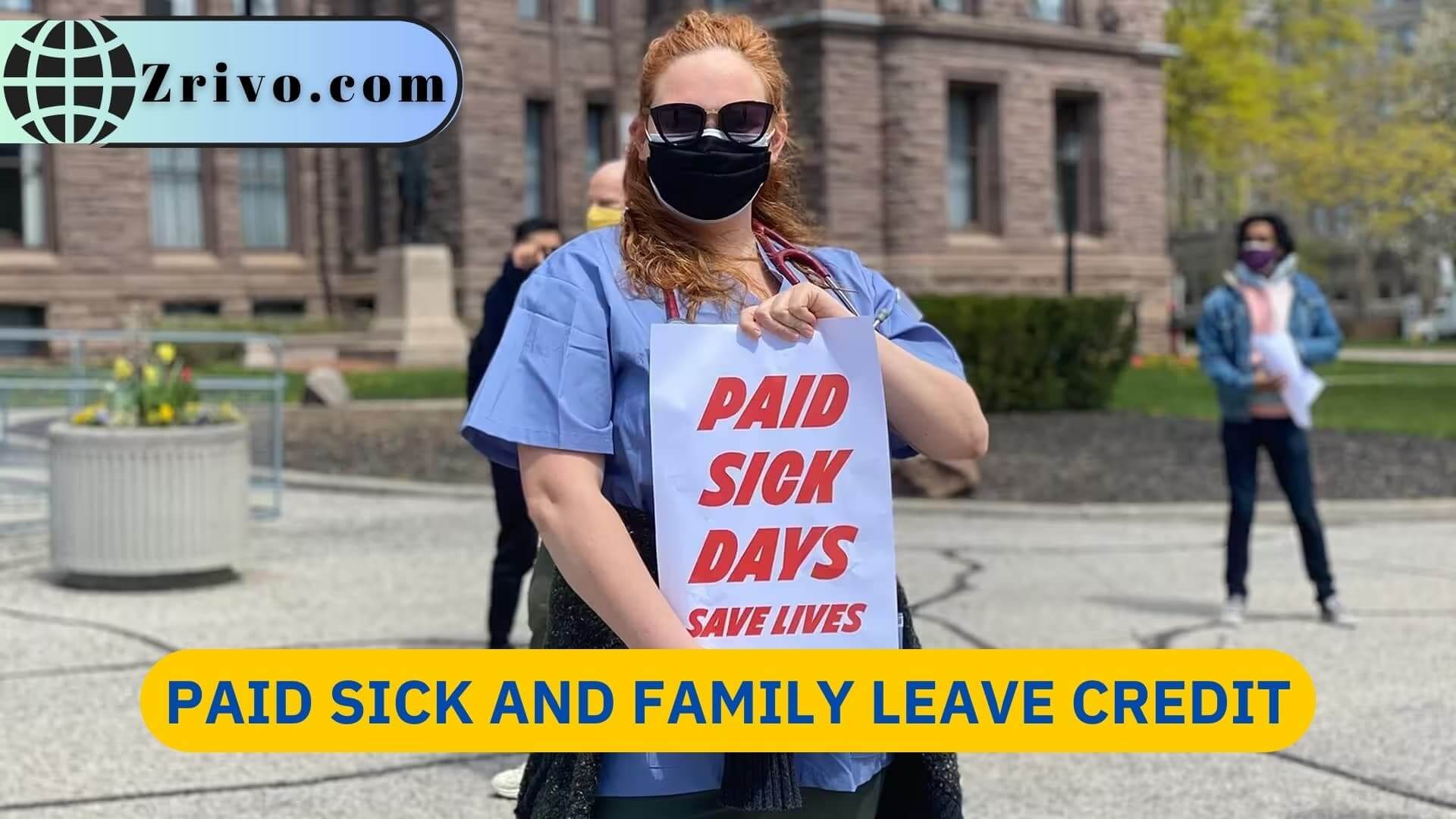
As businesses adapt to the ongoing COVID-19 pandemic, many are facing the challenge of balancing the needs of their employees with the financial realities of the current economic climate. One issue that has come to the forefront is paid sick and family leaves. To help alleviate some of the financial burden on employers, the government introduced the Paid Sick and Family Leave Credit. The Paid Sick and Family Leave Credit is a refundable tax credit that allows eligible employers to offset the cost of providing paid sick and family leave to employees affected by COVID-19. The credit is equal to the wages paid to employees for up to two weeks of sick leave or up to 12 weeks of family leave, plus any qualified health plan expenses allocable to the leave.
Who is Eligible for Paid Sick and Family Leave Credit?
Employers who must provide paid sick and family leave to employees under the FFCRA are eligible for the credit. This includes private-sector employers with fewer than 500 employees and certain public-sector employers. Self-employed individuals may also be eligible for the credit.
To qualify for the credit, the employer must have provided paid sick, and family leave to employees for reasons related to COVID-19, such as caring for a sick family member or child whose school or place of care is closed due to COVID-19. The leave must have been taken between April 1, 2020, and March 31, 2021.

How to Apply for Paid Sick and Family Leave Credit?
To apply for the Paid Sick and Family Leave Credit, eligible employers must report the paid sick and family leave wages paid to employees on their federal employment tax returns, such as Form 941. The credit can be claimed against the employer’s share of Social Security tax, as well as the employer’s share of Medicare tax.
Employers who claim the credit must retain records and documentation to support the credit claimed, including the employee’s name, dates of leave, the reason for leave, and the amount paid. The IRS may request this documentation as part of any audit or review.
In conclusion, the Paid Sick and Family Leave Credit is a tax credit designed to provide relief to employers who are required to provide paid sick, and family leave to employees affected by COVID-19. Eligible employers can claim the credit on their federal employment tax returns and must retain documentation to support the credit claimed. If you are an eligible employer, consider taking advantage of this credit to help offset the cost of providing paid leave to your employees.
Pros:
- Financial Relief for Employers: The credit allows eligible employers to offset the cost of providing paid sick, and family leave to employees, providing some much-needed financial relief during the pandemic.
- Helps Prevent the Spread of COVID-19: By providing paid sick and family leave, employers can help prevent the spread of COVID-19 by allowing sick employees to stay home and care for ill family members.
- Provides Support to Employees: The credit ensures that employees receive paid sick and family leave, which can help reduce the financial burden of taking time off work due to illness or caring for a sick family member.
Cons:
- Limited Time Frame: The Paid Sick and Family Leave Credit only applies to leave taken between April 1, 2020, and March 31, 2021, so employers cannot claim the credit for leave taken after this period.
- Eligibility Criteria: The credit is only available to certain employers, including private-sector employers with fewer than 500 employees and certain public-sector employers. This means that some employers may not be eligible for the credit, which could limit its impact.
- Administrative Burden: Claiming the Paid Sick and Family Leave Credit requires employers to report the amount of paid sick and family leave wages paid to employees on their federal employment tax returns, such as Form 941. This can create an administrative burden for employers, especially those unfamiliar with tax filing requirements.
- Uncertainty about the Future: While the credit provides some relief for employers during the pandemic, there is uncertainty about the future of paid sick and family leave. The FFCRA has expired, and it is unclear whether similar legislation will be introduced in the future, which could leave employers in a difficult position if they are required to provide paid leave in the absence of credit.

Can I Claim Paid Sick and Family Leave Credit in 2023?
The Paid Sick and Family Leave Credit has not been extended beyond its original expiration date of March 31, 2021. This means employers can no longer claim the credit for leave taken after that date.
However, there have been discussions about the possibility of extending or renewing the credit in response to ongoing concerns related to COVID-19. Some lawmakers have proposed new legislation that would extend the credit for a certain period of time or make it a permanent feature of the tax code.
FAQs
What is the Paid Sick and Family Leave Credit?
The Paid Sick and Family Leave Credit is a tax credit introduced by the government to help eligible employers offset the cost of providing paid sick and family leave to employees affected by COVID-19.
Who is eligible for the Paid Sick and Family Leave Credit?
Private-sector employers with fewer than 500 employees and certain public-sector employers are eligible for the credit. Self-employed individuals can also claim the credit.
What types of leave are eligible for the credit?
The credit applies to certain types of paid leave related to COVID-19, including leave taken due to a COVID-19 diagnosis, quarantine or isolation order, or caring for a family member who is ill or under quarantine.
How much is the Paid Sick and Family Leave Credit worth?
The credit is equal to 100% of the qualified sick and family leave wages paid by the employer, up to certain limits.
How do employers apply for the Paid Sick and Family Leave Credit?
Employers can claim the credit on their federal employment tax returns, such as Form 941, by reporting the amount of paid sick and family leave wages paid to employees.
Is the Paid Sick and Family Leave Credit still available?
No, the credit expired on March 31, 2021, and has not been renewed or extended as of April 2023. However, there is ongoing discussion about the possibility of renewing or extending the credit in response to the ongoing COVID-19 pandemic.
Are there any drawbacks to claiming the Paid Sick and Family Leave Credit?
While the credit provides some benefits to eligible employers, some drawbacks include eligibility criteria, administrative burden, and uncertainty about the future of paid leave. Employers should carefully evaluate whether claiming the credit is the right choice for their organization.